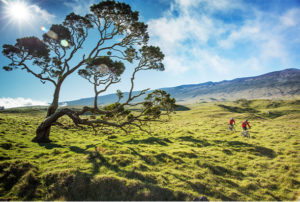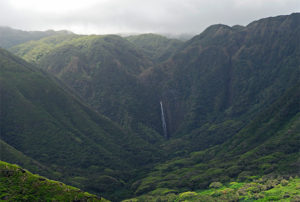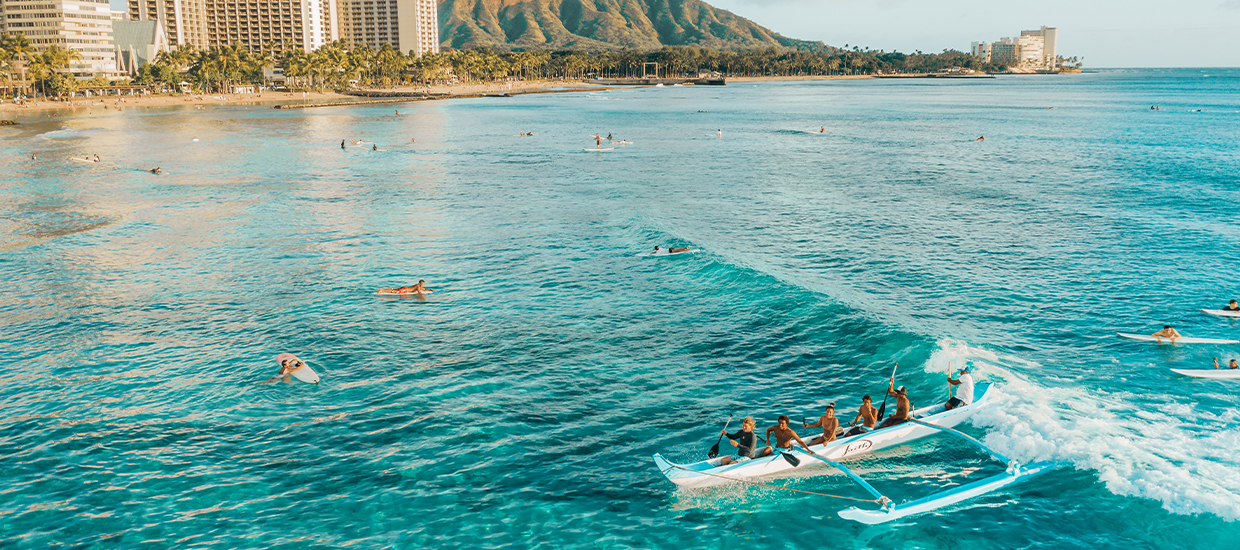Oahu
The ancient Polynesians first came to Hawaii in outrigger canoes more than 1,500 years ago, relying on advanced wayfinding techniques. The canoes, or wa‘a, became integral to Hawaiian life, as did canoe surfing, which was necessary to approach and dock on land. Today, it’s more common to ride the waves on a board than in a boat, but last year a legendary clan of Hawaiian pro surfers opened Moniz Family Surf in Billabong’s newly expanded Waikiki Beach flagship, offering canoe surfing outings alongside standard lessons. $300 for up to six people, monizfamilysurf.com
Island of Hawaii
The Hawaiian fire goddess Pele uses her power to destroy—as seen in last year’s
eruptions from her home in the Halema‘uma‘u crater on Kilauea—but her volcanic outbursts are also the very force that created (and continues to shape) this island. See this dichotomy for yourself on BikeVolcano.com’s five-hour cycling excursion across the East Rift Zone, where a black-sand beach and thermal hot pools were formed last year by the same lava flow that leveled villages. “On the Island of Hawaii, Pele is a force to be reckoned with,” says Keoni Kaholo‘a‘a, a Hawaii Volcanoes National Park interpretive ranger. “When she erupts, she creates new land, which gives opportunity to the native flora and fauna to survive and flourish.” $152, bikevolcano.com

Maui
Loko i‘a, or fishponds, are ancient Hawaiian feats of engineering: rock walls built to enclose small sections of the ocean to trap fish and help provide food for entire communities. While many have fallen victim to invasive species or neglect, some, like Maui’s Ko‘ie‘ie Fishpond, have been painstakingly cared for and restored. Visitors can paddle the 400-year-old pond in a canoe and learn how Hawaiians then and now work with nature to create a sustainable food source. Isaac Bancaco, a spearfisherman and the executive chef at the Andaz Maui at Wailea Resort, sums up the ethos: “Catch what you’ll eat; leave what your children will eat.” $70, mauifishpond.com

Molokai
The Friendly Island is known for its emerald-green sea cliffs (the highest in the world), but visitors who trek into the interior will find an equally wild and verdant place. While Polynesians are believed to have settled the Halawa Valley (pictured) more than 1,300 years ago, today Anakala (“Uncle”) Pilipo Solatorio is the only remaining Hawaiian descendant who was born, raised, and still resides there. Solatorio has been his family’s cultural practitioner since age 5, and 75 years later he still welcomes guests before his son, Greg, takes them on family-friendly 3.4-mile hikes through the valley, much of which is private land. The tiered 250-foot-tall waterfall, taro terraces, and swimming hole are gorgeous, but the guide’s stories about historical rock walls and worship sites are what’s truly mesmerizing. $60, halawavalleymolokai.com




